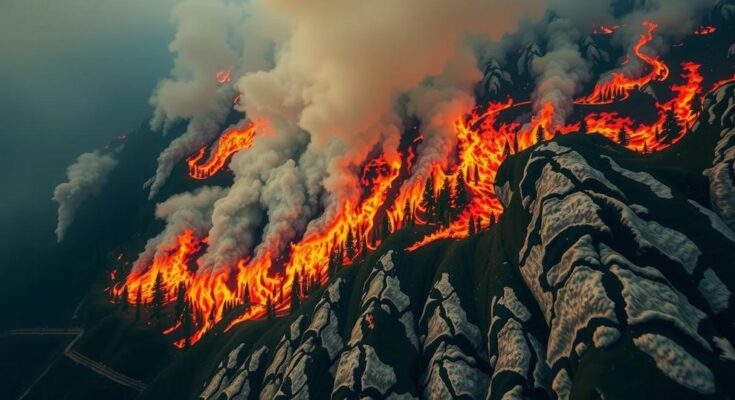Kyrgyzstan registered 18 fires in 24 hours, with significant incidents in Chui and Bishkek. Fire brigades were deployed, and damages included a burned vehicle and destroyed greenhouses. Emergency services conducted three trips to manage these fires.
In the past 24 hours, Kyrgyzstan has reported a total of 18 fire incidents across various regions. The Ministry of Emergency Situations disclosed that fire brigades were promptly dispatched to manage these emergencies on November 29. The Chui region experienced the most significant number of incidents, with ten fires, followed by five in Bishkek, two in the Jalal-Abad region, and one in Osh region. Notably, a Volkswagen Passat B3 suffered a complete engine loss at the intersection of Abdrakhmanov and Kurenkeev streets. Additionally, a garbage fire covered an area of seven square meters at the Gorky and Pozharsky streets intersection, while two greenhouses were entirely destroyed over 280 square meters in Novopokrovka village, located in the Issyk-Ata district. Emergency services undertook three operational trips throughout the day.
Fire incidents pose significant threats to public safety and property, especially during dry or high-temperature seasons. In Kyrgyzstan, like many countries, proactive emergency responses are essential to mitigate the damage caused by such fires. The country has a structured response system coordinated by the Ministry of Emergency Situations, which is responsible for deploying fire brigades to various regions. Tracking and reporting incidents is crucial for resource allocation and public awareness.
The occurrence of 18 fires in just one day underscores the ongoing challenges of fire management in Kyrgyzstan. With most incidents concentrated in the Chui region and Bishkek, the Ministry of Emergency Situations demonstrated a rapid response by mobilizing 18 fire brigades. The extensive damage from various incidents, including vehicle fires and the destruction of greenhouses, highlights the need for continued vigilance and resources to combat fire hazards.
Original Source: m.akipress.com




